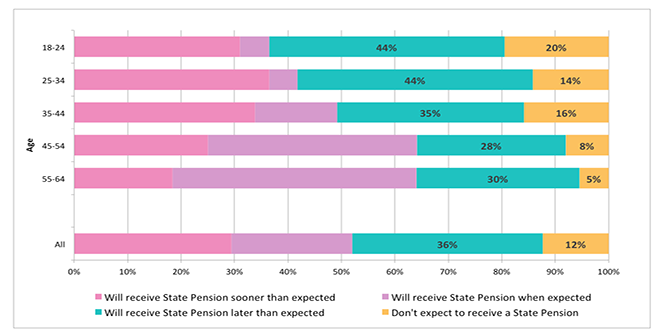Natacha Postel-Vinay is impressed by the radical and bold conclusions presented in this study of the ways in which institutions can affect our voting behaviour.
Citizens, Context and Choice: How Context Shapes Citizens’ Electoral Choices. Russell J. Dalton and Christopher J. Anderson. Oxford University Press. 2011.
Find this book: ![]() Google Books
Google Books ![]() Amazon
Amazon ![]() LSE Library
LSE Library
 To non-specialists, the title Citizens, Context and Choice: How Context Shapes Citizens’ Electoral Choices might suggest that the book deals with how temporary events, issues and scandals affect the way people vote. Not at all – this volume, edited by established electoral studies scholars Russell Dalton and Christopher Anderson, focuses almost exclusively on the ways in which the institutional context (e.g. proportional representation [PR] vs. majoritarian systems, the number of parties and their ideological polarization) impacts voting. As a substantial amount of studies have been undertaken on the topic, even political scientists might be reluctant to read yet another one. But fear not! The book comes up with a radically different, and rather bold, conclusion: these institutional traits, which differ widely among democracies, in fact have very little effect on voting decisions. This bodes ill for those looking for ways to increase the representative power of governments.
To non-specialists, the title Citizens, Context and Choice: How Context Shapes Citizens’ Electoral Choices might suggest that the book deals with how temporary events, issues and scandals affect the way people vote. Not at all – this volume, edited by established electoral studies scholars Russell Dalton and Christopher Anderson, focuses almost exclusively on the ways in which the institutional context (e.g. proportional representation [PR] vs. majoritarian systems, the number of parties and their ideological polarization) impacts voting. As a substantial amount of studies have been undertaken on the topic, even political scientists might be reluctant to read yet another one. But fear not! The book comes up with a radically different, and rather bold, conclusion: these institutional traits, which differ widely among democracies, in fact have very little effect on voting decisions. This bodes ill for those looking for ways to increase the representative power of governments.
The editors of the book assembled an international team of political system specialists to work on a new cross-sectional dataset containing uniformly-collected information at the individual, national and international level. Multilevel analysis thus allows these researchers to separate the effects of individual characteristics (such as education, political views and income) from macro-level political variables. Although each author tackles a different aspect of voting, they all establish the same statistical fact: individual-level characteristics have larger direct effects on voting decisions than institutional ones. This is as much true, for example, with respect to voter turnout, as it is with respect to campaign activity and the strength of Left-Right voting (the propensity for an individual to vote according to her stated position on the Left-Right scale).
But the subtlety of their argument lies in the fact that they also emphasise the existence of indirect or contingent causation effects between less formal political institutions and voting. For instance: although, counter-intuitively, a high number of parties does not increase voter turnout, voters will have a higher probability of casting a ballot as the clarity of choices (party polarization) strengthens. Further, this probability only increases for voters who already believe that voting is important. Likewise, party polarization has a negative effect on campaign activity, but this negative effect shrinks as an individual’s partisan strength grows stronger. Finally, polarization also strongly conditions whether people can translate their Left-Right orientations into party choice.
This volume provides a coherent and ground-breaking account of the subtle ways in which formal and less formal institutions may affect voting behaviour. The use of multilevel analytic methods coupled with new finer measures of political organisation (such as the “effective” number of parties, and of course party polarization) is to be commended. Perhaps one of the only defects of some of these studies is a slight tendency towards tautology; a sentence like “Partisans are more likely to have stronger partisan preferences than non-partisans” may not be needed.
It is also true that some non-specialists may express regret regarding what they expected from the title: the lack of treatment of the role of temporary issues and economic events for voting strategies. Given the current electric political atmosphere, this is somewhat frustrating. However, some chapters do go in this direction: one establishes that Left-Right voting is not that important and that other, more temporary events, affect voting at least just as much; while another specifically studies “performance voting”, albeit by focusing on its causes rather than on its extent and nature (economic or other).
This may be because the dataset is cross-sectional and does not analyse these variables through time. In many occasions the reader might wonder whether these results would be the same if the authors had analysed the evolution of voter behaviour between at least two elections. According to the authors the CSES dataset is perhaps the first multilevel, systematically-organised dataset covering such a large range of countries. The next step will certainly be to follow these countries and individuals in future elections, wherever possible. But overall, given the available data, this volume certainly provides an insightful and rigorous study of the dynamics of voting.
Natacha Postel-Vinay is a PhD student in economic history at LSE.
Find this book: ![]() Google Books
Google Books ![]() Amazon
Amazon ![]() LSE Library
LSE Library







